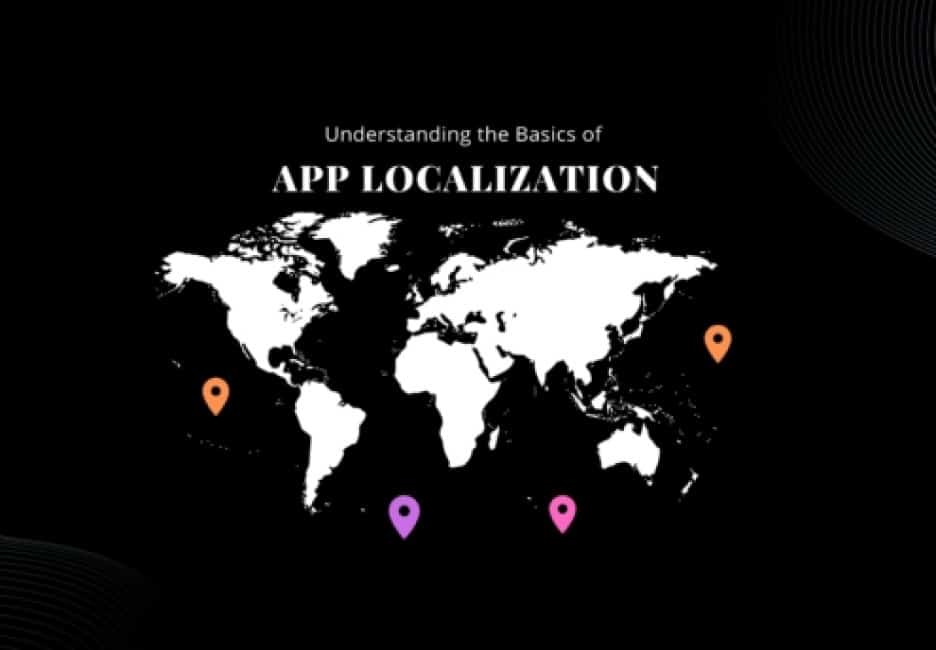
The world is a big place with a host of cultures and languages. When someone downloads an app to use on their phone or tablet, they want and hope that the app will provide them with a good experience as a user. Even though the apps might not have been created for them natively, apps should consider language, terminology, and even culture if the app creator wants to ensure users are happy with their application.
One of the biggest mistakes creators often make when it comes to mobile app localization is trying to take shortcuts to speed up the process or make it easier. It tends to backfire, though. Using Google Translate is a bad idea. It won’t provide the results you need, where localization will. It can be confusing to those using the app, and that’s the last thing you want.
Overall, just using a basic translation like that comes off as lazy, and the people who use the app will feel as though they are getting a secondhand version. Simply put, they will not be impressed.
You need a better understanding of app localization and why it is so important.
What Is App Localization?
Although it might sound complex, the basic gist of mobile app localization is simple. It simply refers to the process of retooling an app to work better for and to appeal to a specific culture or geographic market. It ensures that the app is simple to use and not offensive to others.
One of the things that you need to remember when it comes to app localization is that it should go beyond just having the language translated. You must understand the culture where the app is localized to ensure nothing could upset users.
Some words, symbols, etc., might not be problematic for you, but they could be found offensive in other parts of the world. Don’t allow those to appear in your app in those areas. Therefore, you want to be sure that you have localized your app properly. This can play a larger role in the success or failure of your app in foreign countries than you might think.
You should work to adapt all of the features and elements of the application to work for the language, technical requirements, and culture of the markets you want to reach. This can include changing the visual content, terms, the user interface, and more. It will vary from one culture and geographic location to the next.
Why Is App Localization Important?
How much do you know about cultures that aren’t your own? If you are like most people, you probably just have a cursory knowledge of other cultures and languages. Therefore, you might not know what might be offensive in those regions. For example, in the United States, it’s not a problem to have someone who is scantily clad on your app. In other more conservative countries, this will be a problem.
Even emojis can be a problem. Thumbs up might seem innocuous in the United States, but it’s offensive in Iraq, Iran, and Afghanistan. A backward peace sign is fine here, but it’s offensive in the UK, South Africa, New Zealand, and Australia. There are countless cultural differences, and if you aren’t aware of them, you could create unintentional awkwardness, or even offend people in different countries.
Translations need to be correct, as well, not just generalized as you would get with Google Translate. Words have different meanings when translated. You could make your company look bad without meaning to. That’s the last thing you need when getting into a new market.
Of course, these aren’t the only reasons you will want to make sure that you follow through with mobile app localization. You also want to make sure that as many people as possible have access to your app and that it works well for them without causing any confusion. They should have a good, smooth experience, just like people in your own country. It will help to improve the reputation of your business, and it will help to garner more downloads and sales. Localization can take time. It is a smart business decision, though.
How Would You Localize an Application?
Localization can be complex, and those who don’t have experience with this process will likely want to work with professionals who can help them. A lot of behind-the-scenes work needs to happen. The process is called internalization, which is used in conjunction with localization.
Internalization refers to the app’s technical structure to ensure it can be translated into different languages and used in different geographical locations. The best course of action is to handle the internalization from the start of the app’s creation. Although it is sometimes possible to change once an app has been created and launched, it is difficult.
The internalization process includes coding the app so that it can support a range of languages and characters. This way, the app could work in English, French, and German. It can also work with languages with different characters. This includes Russian and Japanese. Essentially, it provides the framework that is needed.
As important as internalization is, it doesn’t mean that the app has been properly localized. Remember, other elements will need to be changed with the application. This includes language, currency, dates, times, images, videos, etc. All of the content on the app needs to be considered and localized.
Localization can occur before or after launch. Creators need to think about every aspect of their app to ensure that it will be approved and will work well in other locations.
Other Important Things to Know About App Localization
Localization is essential. The information above can help you get a better understanding of how it works. However, there are other things you’ll want to know as well, which we’ll cover below.
You Need to Test the Localization
Even though you may have put a lot of work into localization, you can’t just assume that it will work as intended. You need to test the localization, and the best way to do this is with native speakers of the language you’ve localized. People familiar with the culture should look through the app, as well.
Not only do you want them to test whether the app works properly, but you want them to look for issues with language, cultural sensitivity, etc. Get feedback and then make any changes that are needed. Although this can take a little more time and work, you will find that the results are well worth it.
Choose the Right Markets
Pay attention to different geographical markets and determine which areas you want to reach. While it would be great to offer localization for the entire world, it’s often not practical. If your app will not appeal to some regions or cultures for one reason or another, it may not be in your best interest to spend the time and money localizing for those markets.
What Is Android App Localization?
While many app makers tend to concentrate on apps of iOS, it’s important to remember that there is a massive audience that prefers Android. Therefore, when you create and localize your app, you need to have a version for Android, as well. The same localization elements need to be considered and used for Android. If you want to reach the widest audience and make them happy, don’t forget both iOS app localization and Android app localization.
Start Localization as Early as Possible
Ideally, you will begin localization for the areas you want to cover as early as possible. It makes make launching the apps easy. If you have an app available that is not localized, it is not too late. You can still make the changes needed to get the app ready for more markets. Because it can be a lot of work, you might want to consider working with professionals who have experience in this field. They can help to make the process faster and easier. Always take the time to test the app and get feedback from people who use it.
What is App Localization?
It simply refers to the process of retooling an app to work better for and to appeal to a specific culture or geographic market. It ensures that the app is simple to use and not offensive to others.
Why Is App Localization important?
There are countless cultural differences, and if you aren’t aware of them, you could create unintentional awkwardness and offend people in different countries. It will help to improve the reputation of your business, and it will help to garner more downloads.
How would you localize an Application?
Your app should be translated into different languages and used in different geographical locations. You should be coding the app in a way that it can support a range of languages and characters.

